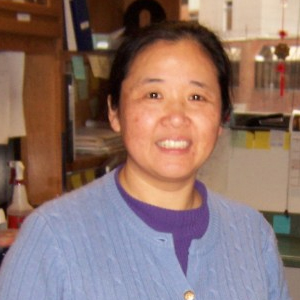Previous Lab Members
Matthew Duvernay
Research Assistant Professor, Pharmacology
Research Interests:
Coming from a purely pharmacological background with an emphasis on G protein-coupled receptors (GPCR) my general research interest lies in understanding how this very effective signaling module has been adapted to controlling signaling events across all systems in the body, by dissecting out the details through which they have diversified and distinguished themselves in each tissue. My post-doctoral work is focused on characterizing the signaling of a unique group of G protein-coupled receptors (GPCRs), the protease activated receptors (PAR) in two primary tissues: platelets and Human Umbilical Vein Endothelial Cells (HUVECs). I am interested in defining conventional paradigms of signaling through these receptors, differences in signaling pathways initiated by different receptor subtypes, and also functional selectivity displayed by these receptor in response to endogenous ligands and also demonstrating how these signaling paradigms contribute to primary cell physiology.
Publications:
Duvernay MT, Temple KJ, Maeng JG, et al. Contributions of Protease-Activated Receptors PAR1 and PAR4 to Thrombin-Induced GPIIbIIIa Activation in Human Platelets. Mol Pharmacol. 2017;91(1):39-47.
Temple KJ, Duvernay MT, Maeng JG, et al. Identification of the minimum PAR4 inhibitor pharmacophore and optimization of a series of 2-methoxy-6-arylimidazo[2,1-b][1,3,4]thiadiazoles. Bioorg Med Chem Lett. 2016;26(22):5481-5486.
Temple KJ, Duvernay MT, Young SE, et al. Development of a Series of (1-Benzyl-3-(6-methoxypyrimidin-3-yl)-5-(trifluoromethoxy)-1H-indol-2-yl)methanols as Selective Protease Activated Receptor 4 (PAR4) Antagonists with in Vivo Utility and Activity Against γ-Thrombin. Journal of medicinal chemistry. 2016; 59(16):7690-5.
Oliver KH, Duvernay MT, Hamm HE, Carneiro AM. Loss of Serotonin Transporter Function Alters ADP-mediated Glycoprotein αIIbβ3 Activation through Dysregulation of the 5-HT2A Receptor. The Journal of biological chemistry. 2016; 291(38):20210-9.
Duvernay MT, Matafonov A, Lindsley CW, Hamm HE. Platelet Lipidomic Profiling: Novel Insight into Cytosolic Phospholipase A2α Activity and Its Role in Human Platelet Activation. Biochemistry. 2015; 54(36):5578-88.
A Novel and Selective PAR4 Antagonist: ML354. Young SE, Duvernay MT, Schulte ML, Nance KD, Melancon BJ, Engers J, Wood MR, Hamm HE, Lindsley CW. Probe Reports from the NIH Molecular Libraries Program [Internet]. Bethesda (MD): National Center for Biotechnology Information (US); 2010-2013 Apr 15 [updated 2015 Feb 11].
Substituted indoles as selective protease activated receptor 4 (PAR-4) antagonists: Discovery and SAR of ML354. Wen W, Young SE, Duvernay MT, Schulte ML, Nance KD, Melancon BJ, Engers J, Locuson CW 2nd, Wood MR, Daniels JS, Wu W, Lindsley CW, Hamm HE, Stauffer SR. Bioorg Med Chem Lett. 2014 Oct 1;24(19):4708-13
Racial differences in resistance to P2Y12 receptor antagonists in type 2 diabetic subjects. Cleator JH, Duvernay MT, Holinstat M, Colowick NE, Hudson WJ, Song Y, Harrell FE, Hamm HE. J Pharmacol Exp Ther. 2014 Oct;351(1):33-43.
Synthesis of indole derived protease-activated receptor 4 antagonists and characterization in human platelets. Young SE, Duvernay MT, Schulte ML, Lindsley CW, Hamm HE. PLoS One. 2013 Jun 11;8(6):e65528.
The angiotensin II type 1 receptor C-terminal Lys residues interact with tubulin and modulate receptor export trafficking. Zhang X, Wang H, Duvernay MT, Zhu S, Wu G. PLoS One. 2013;8(2):e57805.
Alpha2B-adrenergic receptor interaction with tubulin controls its transport from the endoplasmic reticulum to the cell surface. Duvernay MT, Wang H, Dong C, Guidry JJ, Sackett DL, Wu G. J Biol Chem. 2011 Apr 22;286(16):14080-9.
ADP-ribosylation factors modulate the cell surface transport of G protein-coupled receptors. Dong C, Zhang X, Zhou F, Dou H, Duvernay MT, Zhang P, Wu G. J Pharmacol Exp Ther. 2010 Apr;333(1): 174-83.
Duvernay MT, Dong C, Zhang X, Robitaille M, Hébert TE, Wu G. A single conserved leucine residue in the first intracellular loop regulates ER export of G protein-coupled recetors. Traffic.2009,10:552-66
Duvernay MT, Dong C, Zhang X, Zhou F, Nichols CD, Wu G. Anterograde trafficking of G protein-coupled receptors: function of the C-terminal F(X)6LL motif in export from the endoplasmic reticulum. Mol Pharmacol. 2009, 75:751-61.
Dong C, Filipeanu CM, Duvernay MT, Wu G. Regulation of G protein-coupled receptor export trafficking. (Invited review). Biochim Biophys Acta. 2007, 1768:853-70.
Zhou F, Filipeanu CM, Duvernay MT, Wu G. Cell-surface targeting of alpha2-adrenergic receptors — inhibition by a transport deficient mutant through dimerization. Cell Signal. 2006, 18:18-27.
Duvernay MT, Filipeanu CM, Wu G. The regulatory mechanisms of export trafficking of G protein-coupled receptors. (Invited Review). Cell Signal. 2005, 17:1457-65.
Duvernay MT, Zhou F, Wu G. A conserved motif for the transport of G protein-coupled receptors from the Endoplasmic Reticulum to the Cell Surface. J Biol Chem. 2004, 279:30741-50.
Kevin Erreger
Sr Research Specialist, Pharmacology
Education:
2004 Emory University Ph.D. (Neuroscience)
1998 State University of New York at Buffalo B.S. (Biophysics)
Research Interests:
My background is in biophysics and physiology and my current research interests focus on translational research and drug development. I coordinate multiple collaborative projects focused on Protease Activated Receptor 4 (PAR4). We are developing novel PAR4 antagonists for clinical use and also as tools for mouse models of disease. We view PAR4 as a relevant target to investigate in disease processes with inflammatory pathology. Currently, we are investigating the role of PAR4 in Azlheimer’s, kidney disease, and COVID-19.
Publications:
Yim YY, McDonald WH, Betke KM, Kaya A, Hyde K, Erreger K, Gilsbach R, Hein L, Hamm HE.
Specificities of Gβγ subunits for the SNARE complex before and after stimulation of α2a-adrenergic receptors. Sci Signal. 2021 Dec 21;14(714):eabc4970.
Herborg F, Jensen KL, Tolstoy S, Arends NV, Posselt LP, Shekar A, Aguilar JI, Lund VK, Erreger K, Rickhag M, Lycas MD, et al., Identifying dominant-negative actions of a dopamine transporter variant in patients with parkinsonism and neuropsychiatric disease. JCI Insight, 2021. 6(18).
Pulley JM, Rhoads JP, Jerome RN, Challa AP, Erreger K, Joly MM, Lavieri RR, Perry KE, Zaleski NM, Shirey-Rice JK, and Aronoff DM, Using What We Already Have: Uncovering New Drug Repurposing Strategies in Existing Omics Data. Annu Rev Pharmacol Toxicol, 2020. 60: p. 333-352.
Campbell NG, Shekar A, Aguilar JI, Peng D, Navratna V, Yang D, Morley AN, Duran AM, Galli G, O’Grady B, Ramachandran R, Erreger K, et al., Galli A, Structural, functional, and behavioral insights of dopamine dysfunction revealed by a deletion in SLC6A3. Proc Natl Acad Sci U S A, 2019. 116(9): p. 3853-3862.
Reddy IA, Smith NK, Erreger K, Ghose D, Saunders C, Foster DJ, Turner B, Poe A, Albaugh VL, McGuinness O, Hackett TA, et al., Bile diversion, a bariatric surgery, and bile acid signaling reduce central cocaine reward. PLoS Biol, 2018. 16(7): p. e2006682.
Reddy IA, Pino JA, Weikop P, Osses N, Sorensen G, Bering T, Valle C, Bluett RJ, Erreger K, Wortwein G, Reyes JG, et al., Glucagon-like peptide 1 receptor activation regulates cocaine actions and dopamine homeostasis in the lateral septum by decreasing arachidonic acid levels. Transl Psychiatry, 2016. 6: p. e809.
Hamilton PJ, Shekar A, Belovich AN, Christianson NB, Campbell NG, Sutcliffe JS, Galli A, Matthies HJ, and Erreger K, Zn(2+) reverses functional deficits in a de novo dopamine transporter variant associated with autism spectrum disorder. Mol Autism, 2015. 6: p. 8.
Dadalko OI, Siuta M, Poe A, Erreger K, Matthies HJ, Niswender K, and Galli A, mTORC2/rictor signaling disrupts dopamine-dependent behaviors via defects in striatal dopamine neurotransmission. J Neurosci, 2015. 35(23): p. 8843-54.
Cartier E, Hamilton PJ, Belovich AN, Shekar A, Campbell NG, Saunders C, Andreassen TF, Gether U, Veenstra-Vanderweele J, Sutcliffe JS, Ulery-Reynolds PG, et al., Erreger K, Galli A, Rare autism-associated variants implicate syntaxin 1 (STX1 R26Q) phosphorylation and the dopamine transporter (hDAT R51W) in dopamine neurotransmission and behaviors. EBioMedicine, 2015. 2(2): p. 135-146.
Ng J, Zhen J, Meyer E, Erreger K, Li Y, Kakar N, Ahmad J, Thiele H, Kubisch C, Rider NL, Morton DH, et al., Dopamine transporter deficiency syndrome: phenotypic spectrum from infancy to adulthood. Brain, 2014. 137(Pt 4): p. 1107-19.
Hansen FH, Skjorringe T, Yasmeen S, Arends NV, Sahai MA, Erreger K, Andreassen TF, Holy M, Hamilton PJ, Neergheen V, Karlsborg M, et al., Missense dopamine transporter mutations associate with adult parkinsonism and ADHD. J Clin Invest, 2014. 124(7): p. 3107-20.
Hamilton PJ, Belovich AN, Khelashvili G, Saunders C, Erreger K, Javitch JA, Sitte HH, Weinstein H, Matthies HJG, and Galli A, PIP2 regulates psychostimulant behaviors through its interaction with a membrane protein. Nat Chem Biol, 2014. 10(7): p. 582-589.
Bowton E, Saunders C, Reddy IA, Campbell NG, Hamilton PJ, Henry LK, Coon H, Sakrikar D, Veenstra-VanderWeele JM, Blakely RD, Sutcliffe J, et al., Erreger K, Galli A, SLC6A3 coding variant Ala559Val found in two autism probands alters dopamine transporter function and trafficking. Transl Psychiatry, 2014. 4: p. e464.
Hamilton PJ, Campbell NG, Sharma S, Erreger K, Herborg Hansen F, Saunders C, Belovich AN, Consortium NAAS, Sahai MA, Cook EH, Gether U, et al., De novo mutation in the dopamine transporter gene associates dopamine dysfunction with autism spectrum disorder. Mol Psychiatry, 2013. 18(12): p. 1315-23.
Hamilton PJ, Campbell NG, Sharma S, Erreger K, Hansen FH, Saunders C, Belovich AN, Sahai MA, Cook EH, Gether U, McHaourab HS, et al., Drosophila melanogaster: a novel animal model for the behavioral characterization of autism-associated mutations in the dopamine transporter gene. Mol Psychiatry, 2013. 18(12): p. 1235.
Graham DL, Erreger K, Galli A, and Stanwood GD, GLP-1 analog attenuates cocaine reward. Mol Psychiatry, 2013. 18(9): p. 961-2.
Dixit M, Kim S, Matthews GF, Erreger K, Galli A, Cobb CE, Hustedt EJ, and Beth AH, Structural arrangement of the intracellular Ca2+ binding domains of the cardiac Na+/Ca2+ exchanger (NCX1.1): effects of Ca2+ binding. J Biol Chem, 2013. 288(6): p. 4194-207.
Erreger K, Davis AR, Poe AM, Greig NH, Stanwood GD, and Galli A, Exendin-4 decreases amphetamine-induced locomotor activity. Physiol Behav, 2012. 106(4): p. 574-8.
Bowton E, Saunders C, Erreger K, Sakrikar D, Matthies HJ, Sen N, Jessen T, Colbran RJ, Caron MG, Javitch JA, Blakely RD, et al., Dysregulation of dopamine transporters via dopamine D2 autoreceptors triggers anomalous dopamine efflux associated with attention-deficit hyperactivity disorder. J Neurosci, 2010. 30(17): p. 6048-57.
Erreger K and Traynelis SF, Zinc inhibition of rat NR1/NR2A N-methyl-D-aspartate receptors. J Physiol, 2008. 586(3): p. 763-78.
Erreger K, Grewer C, Javitch JA, and Galli A, Currents in response to rapid concentration jumps of amphetamine uncover novel aspects of human dopamine transporter function. J Neurosci, 2008. 28(4): p. 976-89.
Chen PE, Geballe MT, Katz E, Erreger K, Livesey MR, O’Toole KK, Le P, Lee CJ, Snyder JP, Traynelis SF, and Wyllie DJ, Modulation of glycine potency in rat recombinant NMDA receptors containing chimeric NR2A/2D subunits expressed in Xenopus laevis oocytes. J Physiol, 2008. 586(1): p. 227-45.
Binda F, Dipace C, Bowton E, Robertson SD, Lute BJ, Fog JU, Zhang M, Sen N, Colbran RJ, Gnegy ME, Gether U, et al., Erreger K, Galli A, Syntaxin 1A interaction with the dopamine transporter promotes amphetamine-induced dopamine efflux. Mol Pharmacol, 2008. 74(4): p. 1101-8.
Erreger K, Geballe MT, Kristensen A, Chen PE, Hansen KB, Lee CJ, Yuan H, Le P, Lyuboslavsky PN, Micale N, Jorgensen L, et al., Subunit-specific agonist activity at NR2A-, NR2B-, NR2C-, and NR2D-containing N-methyl-D-aspartate glutamate receptors. Mol Pharmacol, 2007. 72(4): p. 907-20.
Dravid SM, Erreger K, Yuan H, Nicholson K, Le P, Lyuboslavsky P, Almonte A, Murray E, Mosely C, Barber J, French A, et al., Subunit-specific mechanisms and proton sensitivity of NMDA receptor channel block. J Physiol, 2007. 581(Pt 1): p. 107-28.
Yuan H, Erreger K, Dravid SM, and Traynelis SF, Conserved structural and functional control of N-methyl-D-aspartate receptor gating by transmembrane domain M3. J Biol Chem, 2005. 280(33): p. 29708-16.
Erreger K and Traynelis SF, Allosteric interaction between zinc and glutamate binding domains on NR2A causes desensitization of NMDA receptors. J Physiol, 2005. 569(Pt 2): p. 381-93.
Erreger K, Geballe MT, Dravid SM, Snyder JP, Wyllie DJ, and Traynelis SF, Mechanism of partial agonism at NMDA receptors for a conformationally restricted glutamate analog. J Neurosci, 2005. 25(34): p. 7858-66.
Erreger K, Dravid SM, Banke TG, Wyllie DJ, and Traynelis SF, Subunit-specific gating controls rat NR1/NR2A and NR1/NR2B NMDA channel kinetics and synaptic signalling profiles. J Physiol, 2005. 563(Pt 2): p. 345-58.
Erreger K, Chen PE, Wyllie DJ, and Traynelis SF, Glutamate receptor gating. Crit Rev Neurobiol, 2004. 16(3): p. 187-224.
Zheng F, Erreger K, Low CM, Banke T, Lee CJ, Conn PJ, and Traynelis SF, Allosteric interaction between the amino terminal domain and the ligand binding domain of NR2A. Nat Neurosci, 2001. 4(9): p. 894-901.
Mott DD, Erreger K, Banke TG, and Traynelis SF, Open probability of homomeric murine 5-HT3A serotonin receptors depends on subunit occupancy. J Physiol, 2001. 535(Pt 2): p. 427-43.
Karren Hyde
Research Specialist Sr., Pharmacology
Education:
Bachelor of Arts, Zoology, University of Tennessee, Knoxville
Master of Laboratory Investigation, Vanderbilt University
Research Interests:
My research interests involve the biomolecular origins and mechanisms of cell signaling pathways, from the genomic level through phenotypic expression.
Publications:
Betke KM, Rose KL, Friedman DB, Baucum AJ 2nd, Hyde K, Schey KL, Hamm HE. Differential localization of G Protein βγ subunits. Biochemistry, 53(14): 2329-43, April 2014.
Wells CA, Zurawski Z, Betke KM, Yim YY, Hyde K, Rodriguez S, Alford S, Hamm HE. Gβγ inhibits exocytosis via interaction with critical residues on soluble N-ethylmaleimide-sensitive factor attachment protein-25. Mol Pharmacol. 82(6):1136-49, Dec. 2012.
Georgoussi Z, Leontiadis L, Mazarakou G, Merkouris M, Hyde K, Hamm H. Selective interactions between G protein subunits and RGS4 with the C-terminal domains of the mu- and delta-opioid receptors regulate opioid receptor signaling. Cell Signaling, 18 (6): 771-782, June 2006.
H.G. Zhang, K. Hyde, G.P. Page, J.P.L. Brand, J. Zhou, S.H.Yu, D.B.Allison, H.C. Hsu, and J.D. Mountz. TNF-α Induced NF-ΚB Regulated Genes in RASF. Arthritis and Rheumatism, 50 (2): 420-431, February, 2004.
Suzette Tardif, Karren Hyde, and Leslie Digby. Evidence for Suppression of Ovulation in Singly-Housed Female Common Marmosets (Callithrix jacchus). Laboratory Primate Newsletter, 33 (2): 2, April,1994.
Ali Kaya, Ph.D.
Research Fellow, Pharmacology
Education:
Ph.D. Biotechnology Institute, University of Ankara, Turkey, 2009
MSc. School of Medicine, Medical Biology Department, University of Ankara, Turkey. 2003
Research Interests:
Heterotrimeric G proteins are one of the most important signal transducing molecules in the cells. They trigger different intracellular signaling cascades in response to the activated GPCRs. Ligand activation of GPCRs leads to G protein binding and catalyzes GDP release from the G protein a subunit. Once GDP is released, a stable, high-affinity complex between the activated receptor and nucleotide free G protein is formed. Binding of GTP to Ga destabilizes this complex and results in dissociation of receptor, GTP-bound Ga and Gbg. Both Gaand Gbg subunits then trigger downstream signaling cascades. After GTP is hydrolyzed to GDP, the Ga subunit reassociates with Gbg, thus completing the cycle.
The guanine nucleotide-binding pocket of the Ga subunit is ~25 Å away from the receptor contact sites. Thus, the receptor must induce a conformational change in the G protein to cause GDP release over this distance. Different studies proposed the potential receptor-catalyzed GDP release mechanisms. Our lab identified that activated rhodopsin induces a rotation and translation of the Ga a5 helix and for receptor-mediated GTP-GDP exchange to occur, the GTPase and helical domains must open up. Although the position of the helical domain is critical for GDP release, the mechanisms of the trigger of this large conformational change are still unknown. Our major focus is to understand the molecular and mechanistic basis of G protein activation by an activated receptor.
Publications:
Functional stability of rhodopsin in a bicelle system: evaluating G protein activation by rhodopsin in bicelles. Kaya AI, Iverson TM, Hamm HE. Methods Mol Biol. 2015;1271:67-76.
A conserved phenylalanine as a relay between the α5 helix and the GDP binding region of heterotrimeric Gi protein α subunit. Kaya AI, Lokits AD, Gilbert JA, Iverson TM, Meiler J, Hamm HE. J Biol Chem. 2014 Aug 29;289(35):24475-87.
Energetic analysis of the rhodopsin-G-protein complex links the α5 helix to GDP release. Alexander NS, Preininger AM, Kaya AI, Stein RA, Hamm HE, Meiler J. Nat Struct Mol Biol. 2014 Jan;21(1):56-63.
Linking receptor activation to changes in Sw I and II of Gα proteins. Hamm HE, Kaya AI, Gilbert JA 3rd, Preininger AM. J Struct Biol. 2013 Oct;184(1):63-74.
Preininger A.M., Kaya A.I., Gilbert J.A. 3rd, Busenlehner L.S., Armstrong R.N., Hamm H.E. Myristoylation exerts direct and allosteric effects on Gα conformation and dynamics in solution. Biochemistry. 2012, 51(9): 1911-24.
Kaya A.I., Onaran H.O., Ozcan G, Ambrosio C, Costa T, Balh S, Ugur O. Cell Contact-Dependent Functional Selectivity of β2-Adrenergic Receptor Ligands in Stimulating cAMP Accumulation and Extracellular Signal-Regulated Kinase (ERK) Phosphorylation. J. Biol. Chem. 2012, 287: 6362-74.
Thaker T.M., Kaya A.I., Preininger A.M., Hamm H.E., Iverson T.M. Allosteric mechanisms of G protein-Coupled Receptor signaling: a structural perspective. Methods Mol Biol. 2012,796:133-74.
Kaya A.I, Ugur O, Altuntas O, Sayar K, Onaran H.O. Long and short distance movements of β(2)-adrenoceptor in cell membrane assessed by photoconvertible fluorescent protein dendra2-β(2)-adrenoceptor fusion. Biochim Biophys Acta. 2011, 1813(8):1511-24
Van Eps N., Preininger A.M., Alexander N., Kaya A.I, Meier S., Meiler J., Hamm H.E., Hubbell W.L. Interaction of a G protein with an activated receptor opens the interdomain interface in the alpha subunit. PNAS. 2011, 108(23);9420-9424
Kaya A.I, Thaker T.M., Preininger A.M., Iverson T.M., Hamm H.E. Coupling Efficiency of Rhodopsin and Transducin in Bicelles. Biochemistry. 2011, 15(50); 3193-3203
Oner S.S., Kaya A.I., Onaran H.O., Ozcan G., Ugur O. β2-Adrenoceptor, Gs and adenylate cyclase coupling in purified detergent-resistant, low-density membrane fractions. Eur J Pharmacol. 2010, 630: 42-52
Jin Liao
Research Assistant II, Pharmacology
Education:
Bachelors of Arts, Finance, Shanxia University (Chongqing, China)
Research Interests:
Assist everyone in the lab, from general maintenance to all areas of molecular biology specializing in protein purification.
Publications:
Trp fluorescence reveals an activation-dependent cation-pi interaction in the Switch II region of Galphai proteins. Hamm HE, Meier SM, Liao G, Preininger AM. Protein Sci. 2009 Nov;18(11):2326-35.
Receptor-mediated changes at the myristoylated amino terminus of Galpha(il) proteins. Preininger AM, Parello J, Meier SM, Liao G, Hamm HE. Biochemistry. 2008 Sep 30;47(39):10281-93.
Alyssa Lokits
Graduate Student, Neuroscience
Education:
B.A,.University of Kansas, 2012
Research Interests:
Heterotrimeric G protein activation via interaction with G protein coupled receptors (GPCRs) represents one of the primary means of cellular signaling in humans. This initial activation of intracellular signaling cascades also represents the pharmacological target of roughly 50% of drug therapeutics on the market. Therefore, it is imperative for the advancement of human medicine to understand receptor – G protein interactions and the mechanism of G protein activation.
To date, much has been done to investigate the receptor-G protein interactions. Recent structural advancements have greatly improved our understanding of these proteins in complex. However, such studies have led to new questions regarding coupling interactions, dynamics, and selectivity. My research investigates the sequence and structure-based underpinnings of these protein-protein interactions, and how these interactions lead to G protein activation.
Publications:
A conserved phenylalanine as a relay between the α5 helix and the GDP binding region of heterotrimeric Gi protein α subunit. Kaya AI, Lokits AD, Gilbert JA, Iverson TM, Meiler J, Hamm HE. J Biol Chem. 2014 Aug 29;289(35):24475-87.
Jae Maeng
Research Assistant I, Pharmacology
Education
Bachelor of Arts, Biological Sciences, Vanderbilt University, 2015
Master of Laboratory Investigation, Vanderbilt University, 2018
Research Interests
Joined the Hamm Lab in 2015. Involved in screening of compounds against Protease Activated Receptor 4 (PAR4).
Duvernay MT, Temple KJ, Maeng JG, Blobaum AL, Stauffer SR, Lindsley CW, Hamm HE. Contributions of Protease-Activated Receptors PAR1 and PAR4 to Thrombin-Induced GPIIbIIIa Activation in Human Platelets. Molecular pharmacology. 2017 Jan;91(1). 39-47.
Temple KJ, Duvernay MT, Maeng JG, Blobaum AL, Stauffer SR, Hamm HE, Lindsley CW. Identification of the minimum PAR4 inhibitor pharmacophore and optimization of a series of 2-methoxy-6-arylimidazo[2,1-b][1,3,4]thiadiazoles. Bioorganic & medicinal chemistry letters. 2016 Dec 15;26(22). 5481-5486.
Temple KJ, Duvernay MT, Young SE, Wen W, Wu W, Maeng JG, Blobaum AL, Stauffer SR, Hamm HE, Lindsley CW. Development of a Series of (1-Benzyl-3-(6-methoxypyrimidin-3-yl)-5-(trifluoromethoxy)-1H-indol-2-yl)methanols as Selective Protease Activated Receptor 4 (PAR4) Antagonists with in Vivo Utility and Activity Against γ-Thrombin. Journal of medicinal chemistry. 2016 Aug 25;59(16). 7690-5.
Kendra Oliver
Graduate Student, Pharmacology
Education:
Bachelor of Science, Loyola University Chicago, 2010
Research Interests:
Platelet hyperactivity is associated with increased blood clot formation, leading to heart disease and stroke. Heart disease and stroke are the first and third leading killers in the US. Even with successes treating cardiovascular disease, advances and novel therapeutic options are needed to reduce thrombotic risk associated with platelet hyperactivity. A clinical observation has shown that treatment with selective serotonin reuptake inhibitors (SSRIs) leads to a bleeding phenotype and reduced platelet aggregation. SSRIs are the most commonly prescribed treatment for depression and depression has a direct correlation with development of cardiovascular disease. This was recently emphasized in statement released by the American Heart Association officially classifying depression as a risk factor for poor outcomes following acute coronary syndrome. Further examination of the serotonergic system in platelet reactivity is needed. My research suggests that peripherally active SSRIs could be used as a potential new treatment for platelet hyperactivity through modulation of the serotonergic signaling system. In particular, we believe that this occurs through 5HT2A receptor biased signaling, modulating integrin dependent adhesion.
Publications:
Kendra H Oliver, Tammy Jessen, Emily L Crawford, Chang Y Chung, James S Sutcliffe, and Ana M Carneiro. Pro32Pro33 Mutations in the Integrin β3 PSI Domain Results in αIIbβ3 Priming and Enhanced Adhesion: Reversal of the Hypercoagulability Phenotype by the Src Inhibitor SKI-606. Mol Pharmacol 2014 Jun;85(6):921-31.
Joseph Parello, Ph.D.
Visiting Scholar, Pharmacology
Education:
MS, Physics/Mathematics (1959)
MS, Chemistry (1960)
Research Interests:
Based on a multidisciplinary approach (synthetic methods in organic chemistry; biophysical and computational methods in structural biology: NMR, crystallization, optical spectrocopies; neutron scattering; homology modeling) our research is focused on two major pharmacological challenges: (i) regulation of chromatin acetylation through a synthetic strategy with novel inhibitors that synergize with major antitumoral drugs in cancer biology and therapy; (ii) search for antidepressant drugs of natural origin (terpenes) selectively acting on the kappa-opioid receptor.
Publications:
Gupta A, Gomes I, Bobeck EN, Fakira AK, Massaro NP, Sharma I, Cavé A, Hamm HE, Parello J, Devi LA. Collybolide is a novel biased agonist of κ-opioid receptors with potent antipruritic activity. Proc Natl Acad Sci U S A. 2016 May 24;113(21):6041-6. PubMed Central PMCID: PMC4889365.
Phyllochrysine et sécurine, alcaloïdes du Phyllantus discoides Muell. Arg. (Euphorbiacées), J. Parello , A. Melera et R. Goutarel. Bull. Soc. Chim., 1963 , 898 -910.
Couplage entre spins nucléaires en résonance magnétique nucléaire (RMN) et méthode de double résonance . J. Parello . Bull. Soc. Chim., 1964, 2033 -2062.
The structure of Sugar Osazones . L. Mester , E .Moczar and J . Parello . J. Amer. Chem. Soc., 1965 , 87, 596-599.
Etude des spectres de masse de la sécurinine et dérivés d’hydrogénation. H.E.Audier et J.Parello. Bull. Soc. Chim., 1968,1552-1559.
Alcaloïdes stéroïdiques -LXXV. Etude dichroïque du chromophore nitrone . J.Parello et X.Lusinchi. Tetrahedron. 1968, 24, 6747-6754.
Alcaloïdes steroïdiques LXXVIII . Etude dichroïque du chromophore amine tertiaire aliphatique . J. Parello et F. Picot . Tetrahedron Letters, 1968, 9, 5083-5086.
Alcaloides steroïdiques LXXIX – Photochimie de nitrones et d’oxazirannes steroïdiques . J. Parello , R . Beugelmans, P. Milliet et X. Lusinchi . Tetrahedron Letters, 1968, 9, 5081-5092.
N.M.R. studies on nitrogen-containing sugar derivatives substituted by15N. Part I. The nature of the chelate ring in sugar osazones . L.Mester, G.Vass, A.Stephen and J.Parello. Tetrahedron Letters,1968, 4053-4056.
Conformational studies on muscular parvalbumins. I. Optical rotatory dispersion and circular dichroism analysis. Parello J; Pechere J F Biochimie 1971, 53, 1079-83.
Oxazirannes. Obtention de lactames N-substitués par photolyse d’oxazirannes. E. Desherces, M. Rivière, J. Parello et A. Lattes, C.R.Acad. Sci. Paris, 1972, 275(C), 581-584.
Model studies in relation to the molecular structure of chromatin. Gourévitch M, Puigdomènech P, Cavé A; Etienne G; Méry J, Parello J Biochimie 1974, 56, 967-85.
Isolation and structural analysis of collybolide, a novel sesquiterpene extracted from Collybia maculata. Carbon-13 NMR of lactones. Bui, A. M.; Cave, A.; Janot, M. M.; Parello, J.; Potier, P.; Scheidegger, U. Tetrahedron 1974, 30, 1327-36.
Photolysis of oxaziridines. IV. Regioselectivity and solvent effects in the opening of oxaziridines at the spiranic junction. Oliveros-Desherces, E.; Riviere, M.; Parello, J.; Lattes, A. Tetrahedron Lett. 1975, 851-854.
Conformation mobility within the structure of muscular parvalbumins. An NMR study of the aromatic resonances of phenylalanine residues. Cavé A; Dobson CM; Parello J; Williams R J FEBS Lett. 1976, 65,190-194.
Superstructure of linear duplex DNA. Vollenweider, H. J.; Koller, T.; Parello, J.; Sogo, J. M. Proc. Nat. Acad. Sci. USA 1976, 73, 4125-4129.
A calcium-43 NMR study of the binding of calcium to parvalbumins. Parello, J.; Lilja, H.; Cave, A.; Lindman, B. FEBS Lett. 1978, 87, 191-195.
Chemical studies on histone acetylation using a synthetic peptide fragment of histone H4. Kervabon A; Parello J; Méry J FEBS Lett. 1979, 98, 152-156.
Na+ binding to parvalbumins studied by 23Na NMR. Parello J; Reimarsson P; Thulin E; Lindman B FEBS Lett. 1979, 100, 153-156.
Magnesium ion binding to parvalbumins studied by magnesium-25 and cadmium-113 NMR spectroscopy. Cave, A.; Parello, J.; Drakenberg, T.; Thulin, E.; Lindman, B. FEBS Lett. 1979, 100, 148-52.
Enzymatic deacetylation of a synthetic peptide fragment of histone H4. Kervabon A; Mery J; Parello J FEBS Lett. 1979, 106, 93-6.
Dynamic aspects of the structure of globular proteins by high resolution NMR spectroscopy. The fluid-like structure of the internal hydrophobic core of muscular parvalbumins. A. Cavé and J. Parello, in Les Houches, Session XXXIII, 1979. Membranes and Intercellular Communication, North-Holland Publishing Company, 1981, 197-227.
Effect of cations on the acetylation of chromatin in vitro. Dod B; Kervabon A; Parello J Eur. J. Biochem. 1982, 121, 401-405.
NMR studies of muscle proteins. Ribeiro A; Parello J; Jardetzky O. Prog. Biophys. Molec. Biol. 1984, 43, 95-160.
Metal-ion binding to parvalbumin. A 113Cd-n.m.r. study of the binding of different lanthanide ions. Drakenberg T; Sward M; Cave A; Parello J Biochem. J. 1985, 227, 711- 7.
A chromatin core particle obtained by selective cleavage of histones by clostripain. Dumuis-Kervabon A; Encontre I; Etienne G; Jauregui-Adell J; Mery J; Mesnier O; Parello J. EMBO J. 1986, 5, 1735-42.
Chromatin core particle obtained by selective cleavage of histones H3 and H4 by clostripain. Encontre I; Parello J. J. Mol. Biol. 1988, 202, 673-6.
Crystal structure determination and refinement of pike 4.10 parvalbumin (minor component from Esox lucius). Declercq J P; Tinant B; Parello J; Etienne G; Huber R., J. Mol. Biol., 1988, 202, 349-53.
Two-dimensional 1 H nuclear magnetic resonance study of pike pl 5.0 parvalbumin (Esox lucius). Sequential resonance assignments and folding of the polypeptide chain. Erratum in: J Mol Biol 1989 Aug 20;208(4):723-4 Padilla A; Cave A; Parello J., J. Mol. Biol., 1988, 204, 995-1017.
Ionic interactions with parvalbumins. Crystal structure determination of pike 4.10 parvalbumin in four different ionic environments. Declercq JP, Tinant B, Parello J, Rambaud J. J Mol Biol. 1991, 220,1017-1039.
Crystallization of catalytic subunit of adenosine cyclic monophosphate-dependent protein kinase. Zheng JH, Knighton DR, Parello J, Taylor SS, Sowadski JM. Methods Enzymol. 1991, 200, 508-521.
Mass spectrometry of proteins: studies of parvalbumins by plasma desorption, laser desorption and electrospray mass spectrometry. Roepstorff, P.; Klarskov, K.; Andersen, J.; Mann, M.; Vorm, O.; Etienne, G.; Parello, J. International Journal of Mass Spectrometry and Ion Processes 1991, 111, 151-172.
Homonuclear Three-Dimensional 1H NMR Spectroscopy of Pike Parvalbumin. Comparison of Short- and Medium-Range NOEs from 2D and 3D NMR. A. Padilla, G.W. Vuister, R. Boelens, G.J. Kleywegt, A. Cavé, J. Parello and R. Kaptein. J. Am. Chem. Soc. 1990, 112, 5024-5030.
Reisman, J., Jariel-Encontre, I., Hsu, V.L., Parello, J., Geiduschek, E.P., Kearns, D.R. (1991). Improving Two-dimensional 1H NMR NOESY Spectra of a Large Protein by Selective Deuteriation. J. Amer. Chem. Soc. 113, 2787-2789.
Crystallization studies of the catalytic subunit of cAMP-dependent protein kinase: crystals of murine recombinant catalytic subunit and a mutant, Cys 343—-Ser 1 diffract to 2.7 A resolution. Zheng J H; Knighton DR; Xuong N H; Parello J; Taylor S S; Sowadski J M., Acta Cryst. B, 1992, 48 ( Pt 2) 241-4.
Crystal structure of the unique parvalbumin component from muscle of the leopard shark (Triakis semifasciata). The first X-ray study of an alpha-parvalbumin. Roquet F; Declercq J P; Tinant B; Rambaud J; Parello J J Mol Biol 1992, 223, 705-20.
A 1 H-NMR study of the transcription factor 1 from Bacillus subtilis phage SPO1 by selective 2H-Iabeling. Complete assignment and structural analysis of the aromatic resonances for a 22-kDa homodimer. Reisman J M; Hsu V L; Jariel-Encontre I; Lecou C; Sayre M H; Kearns DR; Parello J., Eur. J. Biochem. 1993, 213, 865- 73.
Regioselective synthesis of inhibitors of histone acetyltransferase covalently linking spermidine to the S-terminus of coenzyme A. G. Roblot, R. Wylde, A. Martin and J. Parello,Tetrahedron 1993, 49, 6381-6398.
Proton and nitrogen NMR sequence-specific assignments and secondary structure determination of the Bacillus subtilis SPO1-encoded transcription factor 1. Jia X; Reisman J M; Hsu V L; Geiduschek E P; Parello J; Kearns D.R. Biochemistry 1994, 33, 8842-52.
Crystals of the cell-binding module of fibronectin obtained from a series of recombinant fragments differing in length. Dickinson CD; Gay DA; Parello J; Ruoslahti E; Ely K.R., J. Mol Biol 1994, 238, 123-7.
Evidence indicating proximity in the nucleosome between the histone H4 N termini and the globular domain of histone H1. Baneres J L; Essalouh L; Jariel-Encontre I; Mesnier O; Garrod S; Parello J., J. Mol. Biol. 1994, 243, 48-59.
Dynamics of a globular protein as studied by neutron scattering and solid-state NMR. Zanotti, J.-M.; Bellissent-Funel, M.-C.; Parello, J., Physica B: Condensed Matter 1997, 234-236, 228-230.
The N tails of histones H3 and H4 adopt a highly structured conformation in the nucleosome. Baneres J L; Martin A; Parello J. J. Mol. Biol., 1997, 273, 503-8.
The cation-binding domain from the alpha subunit of integrin alphaS beta1 is a minimal domain for fibronectin recognition. Baneres J L; Roquet F; Green M; LeCalvez H; Parello J., J. Biol. Chem. 1998, 273, 24744-53.
Ca2+/Mg2+ ex change in parvalbumin and other EF-hand proteins. A theoretical study. Allouche D; Parello J; Sanejouand Y H., J. Mol. Biol. 1999, 285, 857-73.
Two well-defined motifs in the cAMP-dependent protein kinase inhibitor (PKlalpha) correlate with inhibitory and nuclear export function. Hauer J A; Sarthe P; Taylor S S; Parello J; Padilla A. Prot. Science, 1999, 8, 545-53.
\Hydration-coupled dynamics in proteins studied by neutron scattering and NMR: the case of the typical EF-hand calcium-binding parvalbumin. Zanotti J M; Bellissent-Funel MC; Parello J., Biophys. J. 1999, 76, 2390-411.
Crystal structure of the EF-hand parvalbumin at atomic resolution (0.91 A) and at low temperature (100 K). Evidence for conformational multistates within the hydrophobic core. Declercq J P; Evrard C; Lamzin V; Parello J Prot. Science 1999, 8, 2194-204.
NMR and Hydration of Biomacromolecules in Aqueous Solutions. J. Parello, in Hydration Processes in Biology (M.-C. Bellissent-Funel, ed.), IOS Press, 1999, 379-385.
A minimized human integrin alpha(5)beta(1) that retains ligand recognition. Baneres J L; Roquet F; Martin A; Parello J., J. Biol. Chem. 2000, 275, 5888-903.
Durand D; Hullot P; Vidal J P; Girard J P; Baneres J L; Parello J; Muller A; Bonne C; Rossi J C., Leukotriene B4 photoaffinity probes: design, synthesis and evaluation of new arylazide-1,3-disubstituted cyclohexanes. Bioorg. Med. Chem. Lett. 2000, 10, 811-4.
Photochemical rearrangement of oxaziridines and nitrones in the hexahydroindole series: a convenient synthetic route to 1-azabicyclo[5.2.0]nonan-2-ones as novel RGD mimetics. Bourguet E; Baneres J L; Girard J P; Parello J; Vidal J P; Lusinchi X; Declercq J P., Org. Lett. 2001, 3, 3067-70.
A neutron scattering study of the histone sub-assemblies within the nucleosome core particle. J.-L. Banères, J. Parello, G. Zaccaï and D. Svergun, The ILL millenium symposium & european user meeting, Proceedings, ILL Neutrons for Science, 2001, 55-57.
Bourguet E, Baneres JL, Parello J, Lusinchi X, Girard JP, Vidal JP. Nonpeptide RGD antagonists: A novel class of mimetics, the 5,8-disubstituted 1-azabicyclo[5.2.0]nonan-2-one lactam. Bioorg Med Chem Lett. 2003;13,1561-4.
Banères, J.-L., Martin, A., Hullot, P., Girard, J.-P., Rossi, J.-C., & Parello, J. (2003). Structure-based analysis of GPCR function. Conformational adaptation of both agonist and receptor upon leukotriene B4 binding to recombinant BLT1. J. Mol. Biol., 329, 801-814.
Banères, J.-L., & Parello, J. (2003). Structure-based analysis of GPCR function. Evidence for a novel pentameric assembly between the dimeric leukotriene B4 receptor BLT1 and the G-protein. J. Mol. Biol., 329, 815-829.
Keya Bandyopadhyay, Casey Lee, Ali Haghighi, Jean-Louis Banères, Joseph Parello and Ruth A. Gjerset (2007). Serine Phosphorylation-Dependent Coregulation of Topoisomerase I by the p14ARF Tumor Suppressor. Biochemistry, 46 (49), 14325 -14334.
Preininger AM, Parello J, Meier SM, Liao G, Hamm HE (2008) Receptor-mediated changes at the myristoylated amino terminus of Galpha(i) proteins.Biochemistry 47,10281-93.
Martin, Damian, Laguerre, Parello, Pucci, Serre, Mary, Marie & Baneres (2009). Engineering a G protein-coupled receptor for structural studies: Stabilization of the BLT1 receptor ground state. Protein Science, 18, 727-734.
Yun Young (Susan) Yim
Postdoctoral Fellow, Pharmacology
Education
B.S. Biochemistry/Chemistry, University of California, San Diego, 2010 (La Jolla, CA).
Ph.D. Pharmacology, Vanderbilt University, 2017 (Mentor:Heidi Hamm).
Research interests
Modulation of neurotransmitter exocytosis by activated Gi/o coupled G-protein coupled receptors (GPCRs) is a universal regulatory mechanism used both to avoid overstimulation and to influence circuitry. One of the known modulation mechanisms is the Gβγ and soluble N-ethylmaleimide-sensitive factor attachment protein receptor (SNARE) interaction. There are 5 Gβ and 12 Gγ subunits, but specific Gβγs activated by a given GPCR and the in vivo specificity to effectors is not known. Using the quantitative MRM mass spectrometry, I am interested in understanding the abundance, subcellular localization, and specificity of neuronal Gβ and Gγ subunits to various GPCRs and effectors. I mainly focus on the Gβ and Gγ specificity to auto α2a adrenergic receptors (α2aARs), hetero α2aARs, and SNARE in presence of epinephrine. Moreover, I study the molecular interaction of Gβγ and SNARE proteins to understand the microarchitecture of the Gβγ and SNARE interaction. From these studies, I hope to form the basis for further investigations to determine the effect of G protein specificity on its downstream signaling, identify potential pathophysiological states in which the Gβγ-SNARE interaction may be dysregulated, and yield additional insights into Gi/o-coupled GPCR-mediated regulation of exocytosis.
Publications
Yim YY, McDonald WH, Hyde K, Cruz-Rodríguez O, Tesmer JJG, Hamm HE. Quantitative Multiple-Reaction Monitoring Proteomic Analysis of Gβ and Gγ Subunits in C57Bl6/J Brain Synaptosomes. Biochemistry. 2017; 56(40):5405-5416.
Van Hook MJ, Babai N, Zurawski Z, Yim YY, Hamm HE, Thoreson WB. A Presynaptic Group III mGluR Recruits Gβγ/SNARE Interactions to Inhibit Synaptic Transmission by Cone Photoreceptors in the Vertebrate Retina. The Journal of neuroscience : the official journal of the Society for Neuroscience. 2017; 37(17):4618-4634.
Yim YY, Betke K, Hamm H. Using peptide arrays created by the SPOT method for defining protein-protein interactions. Methods in molecular biology (Clifton, N.J.). 2015; 1278:307-20.
Wells CA, Zurawski Z, Betke KM, et al. Gβγ inhibits exocytosis via interaction with critical residues on soluble N-ethylmaleimide-sensitive factor attachment protein-25. Molecular pharmacology. 2012; 82(6):1136-49.
Ilouz R, Bubis J, Wu J, et al. Localization and quaternary structure of the PKA RIβ holoenzyme. Proceedings of the National Academy of Sciences of the United States of America. 2012; 109(31):12443-8.
Awards
First place in the Division for Molecular Pharmacology Postdoctoral Award Oral Presentation Competition at ASPET (EB2018)
Zack Zurawski
Postdoctoral Fellow, Pharmacology
Research Interests:
Activated Gi/o-type G-protein coupled receptors (GPCRs) for neurotransmitters such as noradrenaline, 5-HT, and dopamine are capable of mediating the inhibition of secretory vesicle cargo release in neurons, adrenochromaffin cells and beta cells in the islets of Langerhans. The mechanisms for secretory vesicle exocytosis and the component
proteins involved are well-conserved between different populations of secretory-granule containing cells. One mechanism for which this phenomenon can occur is via the direct interaction between G protein beta gamma subunits (Gβγ) and the SNARE (soluble NSF attachment protein receptor) proteins of the cell’s vesicle fusion machinery to block vesicle fusion and subsequent cargo release. We have previously shown that Gβγ subunits directly bind to the t-SNARE proteins SNAP-25 and syntaxin1A as well as the v-SNARE protein synaptobrevin. We have established that Gβγ regulates vesicle fusion by competing with synaptotagmin I in a Ca2+ -sensitive manner for binding sites on SNARE proteins. To identify regions on SNARE proteins required for interaction with Gβγ as well as regions on Gβγ required for interaction with SNARE, we have utilized a peptide screening technique. From this, we have identified a series of residues upon SNAP-25 that reduce binding of Gβγ in in vitro protein binding studies. We have also generated a series of residues on Stx1A and Gβγ that we hypothesize are required for the Gβγ-Stx1A interaction. We intend to create full-length Gβγ and Stx1A proteins in which these residues have been mutagenized to Ala. We will then perform binding studies with these full-length Gβγ and Stx1A proteins, much as we did with SNAP-25. Furthermore, we will inject or transfect these proteins into neurons and neuroendocrine cell lines and look for disruption of Gi/o-coupled GPCR-mediated inhibition of exocytosis. From this, we will gain a great deal of structural insights on the nature of the interaction between Gβγ and SNARE. In addition, if introduction of a SNARE protein that specifically cannot bind Gβγ into a cell disrupts the ability of a given Gi/o-coupled GPCR to inhibit exocytosis, our hypothesis of Gβγ-SNARE interactions being vital to Gi/o-coupled GPCR-mediated inhibition of exocytosis will further be validated. Finally, this work will greatly facilitate the identification of additional cell types for which Gβγ -SNARE interactions play a significant role in inhibition of exocytosis, as we will be able to introduce our mutant SNAREs and Gβγ subunits into previously unexplored secretory cell types and look for significant changes in the ability of a given Gi/o-coupled GPCR to inhibit exocytosis.
Publications:
Zurawski Z, Page B, Chicka MC, et al. Gβγ directly modulates vesicle fusion by competing with synaptotagmin for binding to neuronal SNARE proteins embedded in membranes. The Journal of biological chemistry. 2017; 292(29):12165-12177.
Van Hook MJ, Babai N, Zurawski Z, Yim YY, Hamm HE, Thoreson WB. A Presynaptic Group III mGluR Recruits Gβγ/SNARE Interactions to Inhibit Synaptic Transmission by Cone Photoreceptors in the Vertebrate Retina. The Journal of neuroscience : the official journal of the Society for Neuroscience. 2017; 37(17):4618-4634.
Zurawski Z, Rodriguez S, Hyde K, Alford S, Hamm HE. Gβγ Binds to the Extreme C Terminus of SNAP25 to Mediate the Action of Gi/o-Coupled G Protein-Coupled Receptors. Molecular pharmacology. 2016; 89(1):75-83.
Modulation of neurotransmission by GPCRs is dependent upon the microarchitecture of the primed vesicle complex. Hamid E, Church E, Wells CA, Zurawski Z, Hamm HE, Alford S. J Neurosci. 2014 Jan 1;34(1):260-74.
Gβγ inhibits exocytosis via interaction with critical residues on soluble N-ethylmaleimide-sensitive factor attachment protein-25. Wells CA, Zurawski Z, Betke KM, Yim YY, Hyde K, Rodriguez S, Alford S, Hamm HE. Mol Pharmacol. 2012 Dec;82(6):1136-49.










